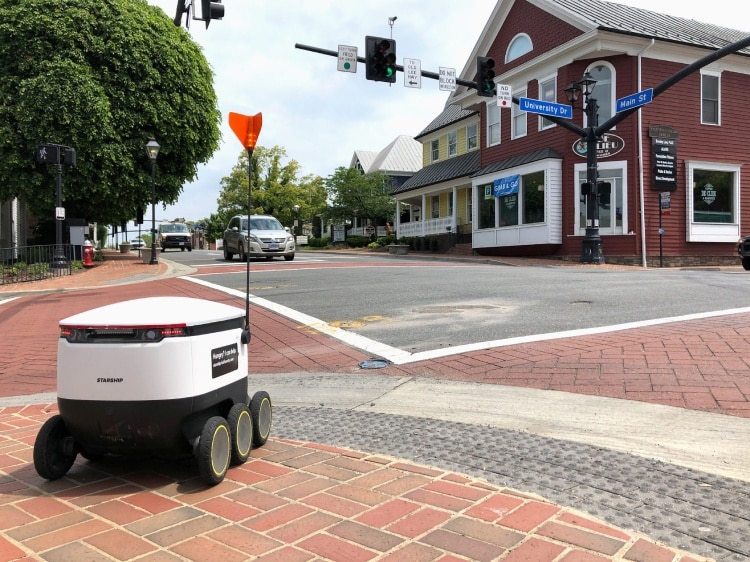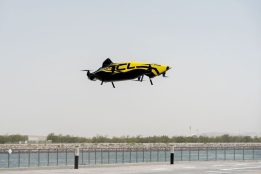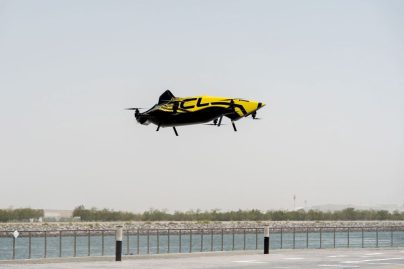Revolutionising take-out deliveries like never before!
Tue 02 Nov 2021
MICHIGAN: Robot food delivery is no longer the stuff of science fiction. But you may not see it in your neighborhood anytime soon.
Hundreds of little robots — knee-high and able to hold around four large pizzas — are now navigating college campuses and even some city sidewalks in the U.S., the U.K., and elsewhere. While robots were being tested in limited numbers before the coronavirus hit, the companies building them say pandemic-related labor shortages and a growing preference for contactless delivery have accelerated their deployment.
“We saw demand for robot usage just go through the ceiling. I think the demand was always there, but it was brought forward by the pandemic effect,” said Alastair Westgarth, the CEO of Starship Technologies, which recently completed its 2 millionth delivery.
Starship has more than 1,000 robots in its fleet, up from just 250 in 2019. Hundreds more will be deployed soon. They’re delivering food on 20 U.S. campuses; 25 more will be added soon. They’re also operating on sidewalks in Milton Keynes, England; Modesto, California; and the company’s hometown of Tallinn, Estonia.
Robot designs vary; some have four wheels and some have six, for example. But generally, they use cameras, sensors, GPS, and sometimes laser scanners to navigate sidewalks and even cross streets autonomously.
Remote operators keep tabs on multiple robots at a time but they say they rarely need to hit the brakes or steer around an obstacle. When a robot arrives at its destination, customers type a code into their phones to open the lid and retrieve their food.
Bill Ray, an analyst with the consulting firm Gartner, says the robots make a lot of sense on corporate or college campuses, or in newer communities with wide sidewalks.
“In the places where you can deploy it, robot delivery will grow very quickly,” Ray said.
Ray said there have been few reports of problems with the robots, other than an occasional gaggle of kids who surround one and try to confuse it. Starship briefly halted service at the University of Pittsburgh in 2019 after a wheelchair user said a robot blocked her access to a ramp. But the university said deliveries resumed once Starship addressed the issue.
Patrick Sheck, a junior at Bowling Green State University in Bowling Green, Ohio, gets deliveries from a Starship robot three or four times a week as he’s leaving class.
“The robot pulls up just in time for me to get some lunch,” Sheck said. Bowling Green and Starship charge $1.99 (AED7) plus a service fee for each robot delivery.
Rival Kiwibot, with headquarters in Los Angeles and Medellin, Columbia, says it now has 400 robots making deliveries on college campuses and in downtown Miami.
Delivery companies are also jumping into the market. Grubhub recently partnered with Russian robot maker Yandex to deploy 50 robots on the campus of Ohio State University in Columbus, Ohio. Grubhub plans to add more campuses soon, although the company stresses that the service won’t go beyond colleges for now.
U.S. delivery orders jumped 66% in the year ending in June, according to NPD, a data and consulting firm. And delivery demand could remain elevated even after the pandemic eases because customers have gotten used to the convenience.
For cheaper sidewalk robots — which cost an estimated $5,000 (AED18,366) or less — it’s even easier to undercut human delivery costs. The average Grubhub driver in Ohio makes $47,650 (AED175,028) per year, according to the job site Indeed.com.
But robots don’t always cost delivery jobs. In some cases, they help create them. Before Starship’s robots arrived, Bowling Green didn’t offer delivery from campus dining spots. Since then, it has hired more than 30 people to serve as runners between kitchens and robots, Bowling Green dining spokesman Jon Zachrich said.
Brendan Witcher, a technology analyst with the consulting firm Forrester, says it’s easy to get excited about the Jetsons-like possibility of robot delivery. But ultimately, robots will have to prove they create an advantage in some way.
“It’s possible that we see this emerge into something else. But it’s the right time and place for companies considering robots to test them and learn from them and do their own evaluation,” he said.
Source: Agencies

 Apr 26 2024
Apr 26 2024













